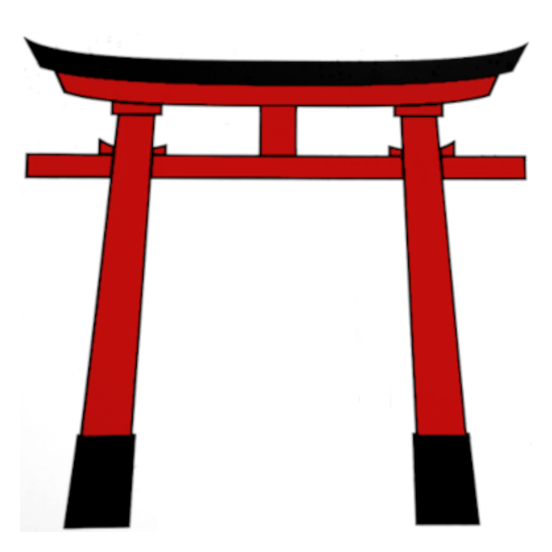Used in these Kanji:
|
|
生
|
 |
|
JLPT 5Joyo 1 |
|
| life, birth, grow, raw, pure
ikiru, umu/maru, haeru, nama, ki, SEI, SHŌ
生
ノ
 |
|
Emphasis ノ (here: a twig) at a growing plant  /丰 /丰
The twig at the growing plant stands for life. |
|
|
|
年
|
 |
|
JLPT 5Joyo 1 |
|
| year
toshi, NEN
ノ
 |
|
Comprises the trunk | of a tree with three 三 branches, which is understood as a growing plant  . Additionally with two accents ノ,| which are understood as fruits. . Additionally with two accents ノ,| which are understood as fruits.
When the growing plants bear fruit, it has passed: another year. |
|
|
|
白
|
 |
|
JLPT 5Joyo 1 |
|
| white
shiroi, HAKU
白
ノ
 |
|
The sun 日 with a sun ray ノ
(You are dazzled) The shining sun makes it: white. |
|
|
|
牛
|
 |
|
JLPT 4Joyo 2 |
|
| cow, bull
ushi, GYŪ
牛
ノ
 |
|
It shows the head of a cow with only one horn ノ. |
|
|
|
自
|
 |
|
JLPT 4Joyo 2 |
|
| self
mizukara, SHI, JI
自
ノ
目
 |
|
An emphasis ノ with an eye 目
I emphasize the eye shows the: own self. |
|
|
|
知
|
 |
|
JLPT 4Joyo 2 |
|
| to know, knowledge
shiru, CHI
矢
ノ
口
 |
|
Left: an arrow 矢 (An arrow ノ flies in the sky 天), right: a mouth 口 (here: a target)
The arrow hits the target, if it knows it. |
|
|
|
係
|
 |
|
JLPT 3Joyo 3 |
|
| charge, duty, involvement
kakari, KEI
亻
系
ノ
 |
|
Left: person 亻(=人), right: system or family line 系 (a stroke ノ as the thread 糸 of the lineage)
(Inheritance of profession from father to son) A person in this family line comes into charge and duty. |
|
|
|
血
|
 |
|
JLPT 3Joyo 3 |
|
| blood
chi, KETSU
血
ノ
皿
 |
|
An accent (or drop) ノ and a plate 皿
The drop on the plate is blood. |
|
|
|
乗
|
 |
|
JLPT 4Joyo 3 |
|
| get on, ride, take part
noru, JŌ
ノ
車
 |
|
Kind of combination of a vehicle 車 and a tree 木 - Or better: a vehicle 車 with open doors
A vehicle with open doors: ... get on for a ride. |
|
|
|
失
|
 |
|
JLPT 3Joyo 4 |
|
| to lose, disappear
ushinau, SHITSU
失
夫
ノ
大
 |
|
Upper left: accent ノ for emphasis, rest: husband 夫 (= big 大 person with extra-caring arms 一)
I emphasize: The husband is losing. |
|
|
|
孫
|
 |
|
JLPT 3Joyo 4 |
|
| grandchild
|
Left: child 子, right: lineage, system 系 (A stroke ノ as the thread 糸 for the lineage.)
The child that is connected by the special [= accent ノ as emphasis] thread of lineage is my grandchild. |
|
|
|
久
|
 |
|
JLPT 2Joyo 5 |
|
| long time, long lasting
hisashii, KYŪ, KU
ノ
⺈
 |
|
Pictograph: bent person ⺈, person 人
The bent person has been there for a long time. |
|
|
|
矢
|
 |
|
JLPT 3Joyo 2 |
|
| arrow
|
Upper left: an accent/emphasis ノ which here is seen as an arrow. Rest: heaven/sky: 天
The stroke ノ in the sky is an arrow. |
|
|
|
及
|
 |
|
JLPT 1Joyo 7 |
|
| reach, extend, come up, and
oyobu/bosu/bi, KYŪ
及
ノ
 |
|
Left: person 人, right: image of a hand stretched out 
The person stretches a hand out to reach s.o. |
|
|
|
矯
|
 |
|
JLPT 1Joyo 7 |
|
| reform, rectify, straighten, correct
tameru, KYŌ
矢
ノ
高
 |
|
Left: arrow 矢 (An arrow ノ flies in the sky 天), right: emphasis ノ, big 大, var. of high/tall 高 (Image of a watch tower)
The arrow is too tall and high, we have to correct/reform this. |
|
|
|
卑
|
 |
|
JLPT 1Joyo 7 |
|
| ignoble, lowly, shabby, base, vulgar
iyashii/shimu, HI
十
ノ
 |
|
From top: accent ノ, field 田, accent ノ, ten 十
I have already emphasized twice that this field is ten times ignoble. |
|
|
|
乏
|
 |
|
JLPT 1Joyo 7 |
|
| poverty, destitution, scarce, meager, lacking
toboshii, BŌ
ノ
 |
|
Top: can be seen a person 人 and bottom as: zigzag
(In search of food) If a person zigzags, he is poor. |
|
|

